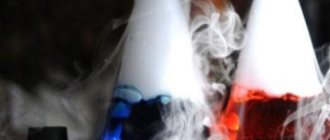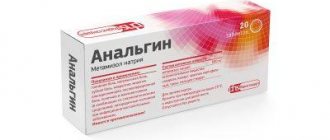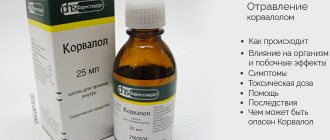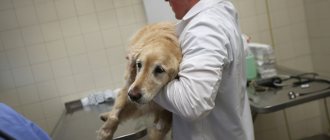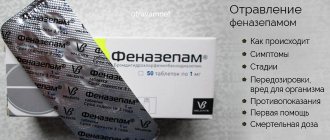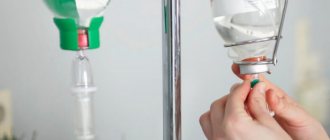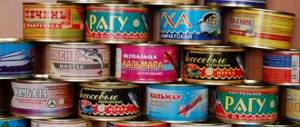Severe alcohol intoxication may be accompanied by convulsive seizures. Convulsions from alcohol poisoning can occur both due to the consumption of excessive amounts of alcohol, and against the background of poisoning with surrogates of alcoholic beverages. The main cause of seizures is damage to the spinal cord and brain by alcohol toxins. A patient with seizures due to alcohol poisoning needs urgent medical attention, since this dangerous condition can have equally dangerous consequences. In our article we will tell you how to understand that a patient is having convulsions, and we will also list your steps to provide first aid to the victim before the ambulance arrives.
Causes of the pathological condition
Intoxication of the body with any toxic substances leads to disruption of the functioning of the organs of the central nervous system, and this is one of the main reasons for the occurrence of convulsive contractions of the muscular system.
Pathology occurs in the case of severe poisoning, when the body is not able to cope on its own with a high concentration of toxic substances and remove them through the process of reverse peristalsis with vomit or feces.
Factors leading to the development of an unpleasant syndrome:
- severe dehydration (occurs due to prolonged vomiting and diarrhea);
- loss by the body of useful mineral elements, without which internal organs and the central nervous system cannot function correctly - magnesium, calcium, potassium;
- development of cerebral edema (in case of poisoning with heavy metals, chemical elements);
- development of renal failure;
- entry into the body of parasites (helminths), occurs in case of poisoning with low-quality food products - expired or not subject to the necessary heat treatment;
- addition of rotavirus infection.
Seizures, as one of the signs of poisoning, require immediate treatment. Without timely assistance, this symptom can lead to serious consequences and cause death.
What is the easiest way to get poisoned?
The most dangerous products in terms of the development of toxic food poisoning are:
- dairy products,
- eggs, especially raw ones,
- meat dishes,
- fish dishes, especially with raw fish,
- confectionery with protein cream,
- home-made canned food and pickles in violation of preservation technology,
- perishable products that require cold storage,
- products with violation of the integrity of packaging and shelf life,
- food service products in violation of sanitary rules during their preparation.
Features of the manifestation of seizures in food poisoning
Vomiting and diarrhea, which inevitably occur after intoxication of the body with low-quality food, are necessary to remove harmful substances. But if these signs persist for more than a day, and there is no progress in reducing their intensity when providing the necessary assistance, you should immediately consult a doctor.
Prolonged vomiting is a common cause of convulsive muscle contractions, especially in children. The reason is the body’s rapid loss of salt, potassium and magnesium, without which the central nervous system cannot function normally.
The second reason is dehydration of the body, which is why it is so important in case of poisoning to provide the patient with a normal drinking regime. Often, when poisoning with meat products, pathogenic, pathogenic microflora join, which provokes disruption of the liver and causes diseases such as hepatitis A and Botkin’s disease.
With the development of these pathologies, a sudden decrease in the concentration of glucose in the circulatory system occurs, causing convulsions to occur. Convulsions during loss of glucose are caused by the fact that the body, not having the necessary source of energy, which is glucose, begins to use fat cells for these purposes.
This, in turn, provokes the oxidation of acetone with the further accumulation of ketone bodies, which have a toxic effect on the central nervous system.
Muscle tension is caused by prolonged diarrhea, which does not go away on the second day after poisoning. The cause of this dangerous symptom is the loss of magnesium and potassium, which are necessary to maintain healthy muscle tone.
Symptoms
Alcohol seizures begin with a sudden sudden loss of consciousness. In this case, the patient falls due to loss of balance, and the muscles of the limbs, face and whole body begin to contract uncontrollably. The skin on the face first turns white, and then may acquire a bluish tint. An epileptic seizure or convulsion can last several seconds or minutes, but this time is sometimes enough for dangerous and serious consequences to occur.
Important: epilepsy against the background of chronic alcohol intoxication can become chronic.
In the future, a person may experience epileptic seizures even without drinking alcohol. This is explained by the fact that prolonged drinking bouts cause irreversible changes in the central nervous system. This leads to seizures regardless of alcohol intake. Seizures can also occur for other reasons, for example, due to atherosclerosis, chronic brain diseases and some infectious diseases. However, convulsive syndrome due to alcohol intoxication is characterized by a more acute course.
The following symptoms may indicate the onset of epilepsy:
- muscle cramps;
- body aches;
- fainting;
- pain in all extremities;
- convulsions.
If alcohol poisoning was very severe, then convulsions may recur more than once. Often, chronic alcoholics with a hangover experience sharp pain in their limbs and muscles. The following features are characteristic of convulsive seizures due to alcohol poisoning:
- a couple of days after alcoholic libations, muscles may cramp;
- against the background of alcoholic epilepsy, hallucinations may occur;
- withdrawal symptoms (alcohol withdrawal) may appear and increase, which are expressed in delirium, sleep disturbance and delirium tremens;
- progressive personality degradation, manifested in excessive vulnerability, increased irritability, decreased ability to concentrate, behavioral and speech disorders.
When conducting brain studies, characteristic changes that occur with epilepsy are revealed. Any epileptic seizure due to alcohol intoxication is a serious threat to human health, since the patient may be injured during a fall or choke on vomit. If qualified assistance is not provided in time, the patient may die.
Pre-hospital first aid
At the first manifestation of convulsions, you must immediately call an ambulance. Taking any medications without a doctor's permission is strictly prohibited. Without knowing the cause of seizures, taking medications can only worsen the situation.
All that people who are next to a poisoned person can do is lay them down, cover them with a blanket, and carefully watch to ensure that the tongue does not retract, as this can cause asphyxia.
If a person begins to have convulsions while standing, he needs to be supported so that the victim does not hurt himself during the fall. It is especially important to take care of the head, since a traumatic brain injury will further aggravate the condition and cause a new attack of more intense convulsions.
You should not forcibly restrain a person’s chaotic movements, this will have an even more negative effect on the condition of the muscular system.
First aid medical procedures that are provided immediately after the ambulance arrives on the way to a medical facility:
- Oxygen inhalation. This method allows you to relax the muscles, reduce their tone, and is a prevention of asphyxia, which can occur due to a spasm of the throat.
- Introduction of an anesthetic substance - oxygen with nitrous oxide. The dosage is selected individually, depending on the severity of the intensity of the manifestation of the convulsive syndrome.
- Using a chloral hydrate enema. Depending on the patient’s condition, the drug can be administered intramuscularly, in a dosage of 5 to 10 ml of a 10% solution. If an enema is given, the volume of the medicine is 25 ml, the concentration of the solution is 4%.
- Warming the victim - Immersion in a bath of warm water helps relax the muscles.
Rehabilitation
It is considered the last stage of treatment of the disease. The main emphasis here is on diet, giving up bad habits and physical therapy methods.
Nutrition after discharge from the hospital involves regular split meals in small portions. Patients are prohibited from eating fried, fatty, spicy, smoked foods, and canned food. At first, fresh vegetables and fruits are restricted, as they contain organic acids that irritate the walls of the stomach and intestines. You cannot drink alcohol, coffee or carbonated drinks. For two weeks, the diet consists of pureed soups, decoctions, porridges, cutlets, fish, cooked in the oven or steamed. To restore your own microflora, it is recommended to actively consume fermented milk products.
To improve their well-being, patients are offered balneotherapy (hydromassage, mineral baths), electrophoresis, ultrasound, magnet or laser.
Recovery and rehabilitation period
Poisoning is a big stress for the body. Even with the rapid relief of signs of intoxication such as vomiting, diarrhea, and abdominal pain, the body still needs some time to recover.
If the poisoning was aggravated by a dysfunction of the central nervous system, which was manifested by convulsions, after providing medical care it is necessary to undergo a rehabilitation course, including diet, rest, taking vitamin complexes, and, if necessary, a massage course.
Over the next few weeks, a person who has suffered poisoning with the manifestation of convulsive muscle contractions must be provided with an adequate drinking regime. It is recommended to drink plain boiled or purified water, in small portions, but often. The daily water intake should be at least 3 liters. It is prohibited to consume juices and alcoholic drinks.
With regular exercise, the degree of physical activity must be reduced. This does not mean that you need to lie on the couch for 14 days, but overworking yourself with sports and putting excessive stress on your muscles is not recommended, this will lead to increased tone.
It is imperative to change your diet. During the recovery period, preference is given to foods enriched with fiber and protein, which are necessary to restore the muscle corset. Among vegetables and fruits, you must eat tomatoes, apples and bananas, raisins and dried apricots, and you must take fermented milk products.
Despite the fact that alcohol is strictly prohibited, it is recommended to drink 50-100 grams of high-quality dry red wine daily to restore the circulatory system. When cooking, you need to increase the amount of salt, or eat salty foods, such as herring, as often as possible. The amount of sugar in the diet should be limited.
It is forbidden to use cool or cold water for bathing after an attack of convulsions; this can provoke a new spasm and return severe symptoms of convulsive muscle contractions. If after an attack a person experiences muscle pain, it is recommended to undergo a course of massage, which should only be performed by a qualified doctor.
Prevention of such a complication as convulsions that occur during severe intoxication consists of providing timely assistance to a poisoned person - stopping vomiting and diarrhea that lasts more than a day, preventing body temperature from rising to critical levels, especially in children, by timely taking antipyretic drugs.
If you cannot improve the condition of the injured person on your own, you must immediately call an ambulance. It is recommended that the medical team be told how long the seizures last and the approximate interval between seizures. This data will help doctors provide adequate assistance and prescribe the correct treatment.
a) Epileptic seizures during poisoning
. Common causes of pharmacogenic epileptic seizures include withdrawal of substances (ethanol, barbiturates, benzodiazepines) and non-compliance by epileptic patients with the prescribed anticonvulsant therapy regimen.
In one study, the leading causes of poisoning-related seizures were (in descending order of frequency) tricyclic antidepressants, cocaine, isoniazid, theophylline, and amphetamines.
b) Status epilepticus in case of poisoning
. Initial (emergency) diagnostic procedures should include determination of antiepileptic drug levels; analysis of serum chemistry, including concentrations of glucose, sodium, calcium and magnesium, and determination of blood urea nitrogen.
Prevention
To prevent or minimize the risk of food poisoning, you must follow basic rules:
- prepare food only in kitchens, regularly clean the cooking and eating areas,
- strictly follow the rules of culinary processing of products, cooking technology,
- use only good quality products, check expiration dates,
- if possible, do not store perishable products, or store them in the refrigerator for no more than 6-12 hours,
- treat products with raw ingredients with caution, especially in public catering,
- Always check the quality of products visually and by smell,
- do not consume homemade canned goods purchased at markets,
- wash hands and dishes thoroughly,
- fight flies and other insects in the house, and especially in the kitchen,
- do not eat unfamiliar foods or dishes, especially in public places,
- Always boil or filter water.
Medicines that cause convulsions - epileptic seizures:
a) Antidepressants and lithium salts
: Tricyclic antidepressants (often), including classic and “new” (mianserin, maprotiline, amoxapine) Monoamine oxidase inhibitors
b) Antipsychotics
: Phenothiazines Butyrophenones (not so common) Antihistamines (H receptor antagonists), more often in children Antiepileptic drugs and their paradoxical proconvulsant activity
c) Central nervous system stimulants
: Cortical stimulants Theophylline Cocaine (factors - hyperthermia and cardiac arrhythmias); (breaking cocaine condoms from smugglers carrying it inside their own bodies) Amphetamines (at high doses in “disco” users)
d) Brainstem stimulants
: Pentatetrazole, picrotoxin (rarely used) Spinal stimulants: strychnine Over-the-counter stimulants: caffeine, L-phenylpropanolamine, ephedrine
e) General anesthesia
: Inhalational anesthetics Enflurane Isoflurane Intravenous and non-narcotic anesthetics: ketamine, etomidate, methohexital Local anesthetics Lidocaine (in high doses)
f) Antiarrhythmic drugs (including lidocaine)
: Mexiletine Tocainide Ajmalin Disopyramide (severe hypoglycemia) Quinidine Quinine (street drug additive) Propranolol (after high doses)
g) Opioids and other narcotic analgesics
: Morphine (in high doses in newborns and infants) Meperidine (normeperidine) Dextropropoxyphene Fentanyl and sufentanil Partazone
h) Non-narcotic analgesics and non-steroidal anti-inflammatory drugs
: Aspirin and salicylates (poisoning – glucose deficiency in the brain?) Mefenamic acid (in overdose)
i) Antimicrobial agents
: Beta-lactam antibiotics Penicillin Cephalosporins (rare) Imipenem/cilastatin
j) Anti-tuberculosis drugs: Isoniazid (overdose or therapeutic dose) Cycloserine
l) Antifungal agents
: Amphotericin B, miconazole (rare)
l) Antimalarials
: Chloroquine, pyrimethamine (both in overdose)
m) Antineoplastic agents (not often)
: Alkylating agents: chlorambucil, bisulfate, mechlorethamine Antimetabolites: high-dose methotrexate, cytarabine Vinca alkaloids: vincristine Others: cisplatin, carmustine, asparaginase (not common)
o) Immunosuppressants
: Cyclosporine (in 10% of cases neurological side effects) Glucocorticoids (sometimes, more often when used with cyclosporine)
o) X-ray contrast media
In case of poisoning, convulsions occur due to dehydration, loss of salts or damage to the central nervous system. Convulsive syndrome develops during intoxication with drugs, chemicals, and neurotropic toxins. It is treated differently, depending on the cause. Why do convulsions occur during intoxication? There are several reasons:
- Dehydration, loss of electrolytes (potassium, magnesium, calcium).
- Poisoning with organophosphorus compounds, cholinesterase inhibitors, strychnine, poisonous mushrooms, spoiled meat.
- Swelling of the brain caused by toxins and chemicals.
- The occurrence of renal failure due to toxic infections.
- Acetonemic syndrome due to hepatitis A or rotavirus infection.
- Heavy metal poisoning.
- Helminthiases.
Infections cause seizures when poisoned
Convulsions during poisoning occur more often in children than in adults. However, in adults they are also possible, especially with food poisoning with severe dehydration. Profuse vomiting with profuse diarrhea leads to loss of mineral salts - potassium, magnesium, sodium, calcium, as well as fluid. This is typical for intestinal infections such as coliform infection, shigellosis (dysentery), cholera.
With dysentery and coli infection, toxins become the cause of convulsions, leading to renal failure and hemolytic-uremic syndrome. In case of renal failure, convulsions occur caused by toxic damage to the central nervous system (see Brain poisoning).
Find out how a cocaine overdose manifests itself and in what cases seizures occur.
Read how to identify a substance abuser and cure him of his addiction.
If the cause of poisoning is the hepatitis A virus, which affects the liver, then glycogen (bound glucose) may be depleted. And with diarrhea, as a symptom of Botkin’s disease, not only mineral salts are lost, but also glucose. As a result, hypoglycemia occurs in the blood, which leads to the use of fatty acids as an energy source. Fatty acids are oxidized into acetone, which causes the accumulation of ketone bodies, which have a toxic effect on the nervous system and lead to the development of convulsions.
Consequences
Alcohol poisoning and seizures cause serious mental disorders. Moreover, the intensity of the manifestation of the consequences of seizures is directly related to the frequency of alcohol consumption and the strength of the patient’s passion for alcoholic beverages. An alcoholic becomes characterized by memory lapses, increased temper and aggressiveness. In addition, alcoholic epilepsy is accompanied by the following complications:
- loss of interest in life;
- decreased performance;
- a person's will weakens significantly;
- he becomes prone to hysteria;
- a person cannot control his aggressiveness;
- depressive states with suicide attempts.
Important: an alcoholic’s desire to end his life is associated with a feeling of its meaninglessness and his own inferiority.
Alcoholics who have many problems associated with alcoholism are most prone to suicide:
- health has deteriorated;
- conflicts and problems at work, and maybe loss of work;
- unsuccessful attempts to find a new job;
- scandals and quarrels in the family;
- personality degradation;
- loss of interest in life.
Most often, alcoholic epilepsy is diagnosed in middle-aged alcoholics (30-45 years old), who have been drinking alcohol regularly for 7-10 years. Sometimes seizures can occur even after a two-year period of systematic alcohol consumption.
Not all chronic alcoholics experience seizures, as it depends on the characteristics of their body and state of health. That is why it is almost impossible to say exactly when isolated cases of seizures will develop into chronic epilepsy.
It is worth knowing: convulsive syndrome is a confirmation of the presence of organic disorders in the central nervous system and encephalopathy, which are caused by general alcohol intoxication.
The cause of seizures is poisoning with chemical compounds
Muscle twitching occurs due to drug poisoning or drug overdose. When intoxicated with anticholinesterase drugs, such as Kalimin, Proserin, acetylcholine is not destroyed. This leads to its accumulation in the nerve endings, resulting in seizures.
Organophosphorus compounds used as pesticides and chemical warfare agents also inhibit cholinesterase activity. This leads not only to convulsive syndrome, but also pulmonary edema, bronchospasm, and suffocation. Chemical warfare gases, such as mustard gas, soman, sarin, are prohibited for use by the UN convention.
Cerebral edema is caused by ethyl and methyl alcohol. When excess fluid accumulates in the brain and intracranial pressure increases, seizures occur.
Heavy metals - copper, mercury, lead and their compounds, as well as the toxic non-metal - arsenic - have a toxic effect on the central nervous system. Copper, entering the body, accumulates in the subcortical nuclei, causing extrapyramidal syndrome. It is characterized by involuntary movements of the body and limbs, and head tremor. With arsenic poisoning, not only convulsions are possible, but also kidney failure.
Why do poisonous mushrooms and plants cause seizures?
Poisonous mushrooms and plants cause convulsions when poisoned in adults and children. The fly agaric mushroom (see Amanita poisoning) leads to damage to the cholinergic nervous system, similar to that caused by intoxication with organophosphorus compounds.
Poisonous plants, such as chilibuha (emetic nut), contain alkaloids that affect the body through the same mechanism. The plant's alkaloid, strychnine, was used in sports to increase muscle strength. It is used to bait mice and rats. Poisoning causes severe convulsive syndrome and pulmonary edema, threatening suffocation.
Statistics
According to epidemiological data, incidence rates are approximately 3–4 people per thousand of the population. It is worth clarifying that an acute course is observed in 20% of cases, the remaining percentage occurs in chronic patients. Intoxication affects all social strata: adults, children, older people, pregnant women.
In European countries, hospitalization for poisoning occurs twice as often as compared to myocardial infarction, and the mortality rate is similar to the mortality statistics for transport accidents.
The increase in the prevalence of intoxication is due to several reasons, the main ones being environmental pollution and people’s indifference to their own health. The number of alcoholics and mentally unstable people is steadily growing, many cases associated with deliberate decisions by the victims themselves. In addition, new strains of microorganisms have emerged that are resistant to adverse conditions, disinfectants and antibacterial agents.
Treatment of seizure syndrome
Therapy for convulsive syndrome consists of treating the poisoning that led to it. The following remedies are used to eliminate convulsions:
- Anticonvulsants – barbiturates, valproic acid derivatives, hydantoins, benzodiazepines.
- Oxygenation - oxygen is supplied with nitrous oxide.
- Chloral hydrate.
- Intravenous administration of Ringer's solution and other crystalloids for intestinal infections and food poisoning.
- Treatment with specific antidotes.
- Chelation and removal of toxic heavy metals.
- Decongestant therapy.
Anticonvulsants treat seizures with unknown causes.
In case of food poisoning and intestinal infections, it is important to restore the volume of circulating blood, as well as replenish the supply of electrolytes and glucose. It is important to administer intravenous glucose solution when acetonemic convulsions and vomiting occur. Ringer's solution contains both potassium and glucose. Potassium relaxes skeletal muscles, relieving convulsive syndrome during hypokalemia. Administration of calcium chloride is indicated for hypocalcemic tetany.
The supply of oxygen reduces the convulsive readiness of the brain caused by hypoxia. To maintain the normal function of the respiratory center of the medulla oblongata, oxygen is mixed with nitrous oxide. Chloral hydrate is used orally and as enemas for seizures in children and adults.
Read how an overdose of Anaprilin manifests itself and what to do in this situation.
Did you know that seizures occur when you overdose on Fluoxetine?
Did you know that with an overdose of Diphenhydramine, children develop convulsive syndrome?
For poisoning with fly agarics, strychnine, organophosphates and anticholinesterase drugs, a specific antidote is the belladonna alkaloid atropine, which causes a blockade of cholinergic nerve receptors and relieves acetylcholine convulsive syndrome. It is possible to use cholinesterase reactivators – Alloxime, Dipiroxime. These drugs destroy excess acetylcholine.
For convulsions due to intoxication with heavy metals, sodium thiosulfate, lipoic acid, and Tetacine-calcium are used. Sulfide groups bind to metals and form inert, low-toxic compounds with them that are excreted from the body. D-penicillamine is used to eliminate copper.
If convulsions are caused by cerebral edema due to poisoning, remove excess fluid from the body and eliminate intracranial hypertension. For these purposes, osmotic diuretics (Manit) are used. In case of intoxication, in some cases, blood dialysis, peritoneal dialysis and forced diuresis are performed.
Diagnostics
In the first stages, the doctor collects an anamnesis of the disease and conducts a general examination, which takes into account the functioning of vital organs. Next, the doctor writes out directions for several types of examinations, including:
- Instrumental analysis. Includes ultrasound of the abdominal organs, heart, plain chest radiography, ECG, MRI, CT, endoscopic methods that allow visualization of affected tissues.
- Toxicology test. It is necessary to establish the concentration of a toxic substance in biological media and assess the effect of the compound on the activity of the liver and kidneys.
- Laboratory research. It is performed for almost all diseases and involves conducting a general analysis of blood, urine, determining the number of biochemical indicators, and recording impurities in stool. In case of acute food poisoning, serological diagnosis is required - determination of antibodies to microorganisms in plasma.
In case of mass infection, specialized services are called in and are obliged to conduct their own independent investigation, determine the cause of the epidemic outbreak and punish those responsible for what happened.

